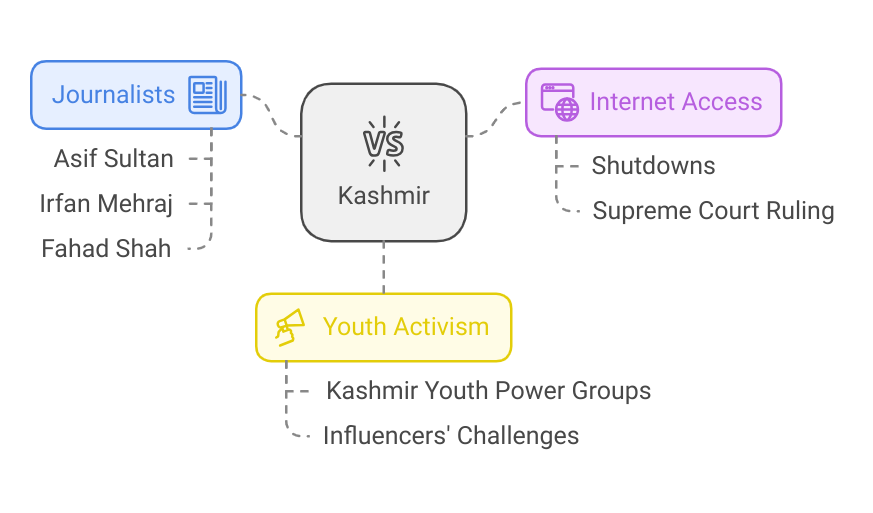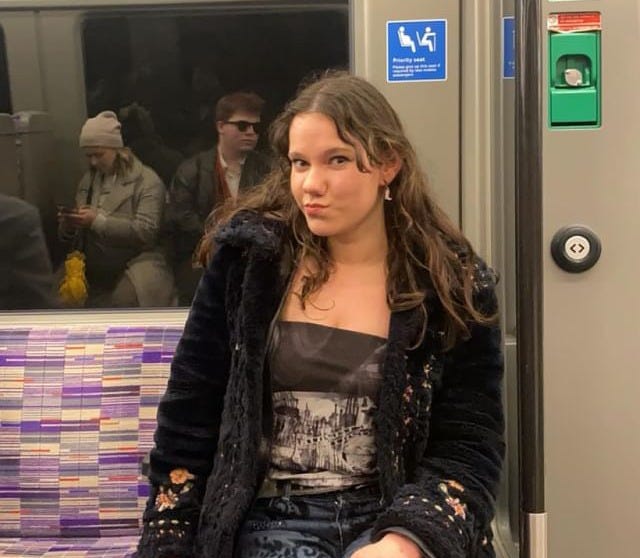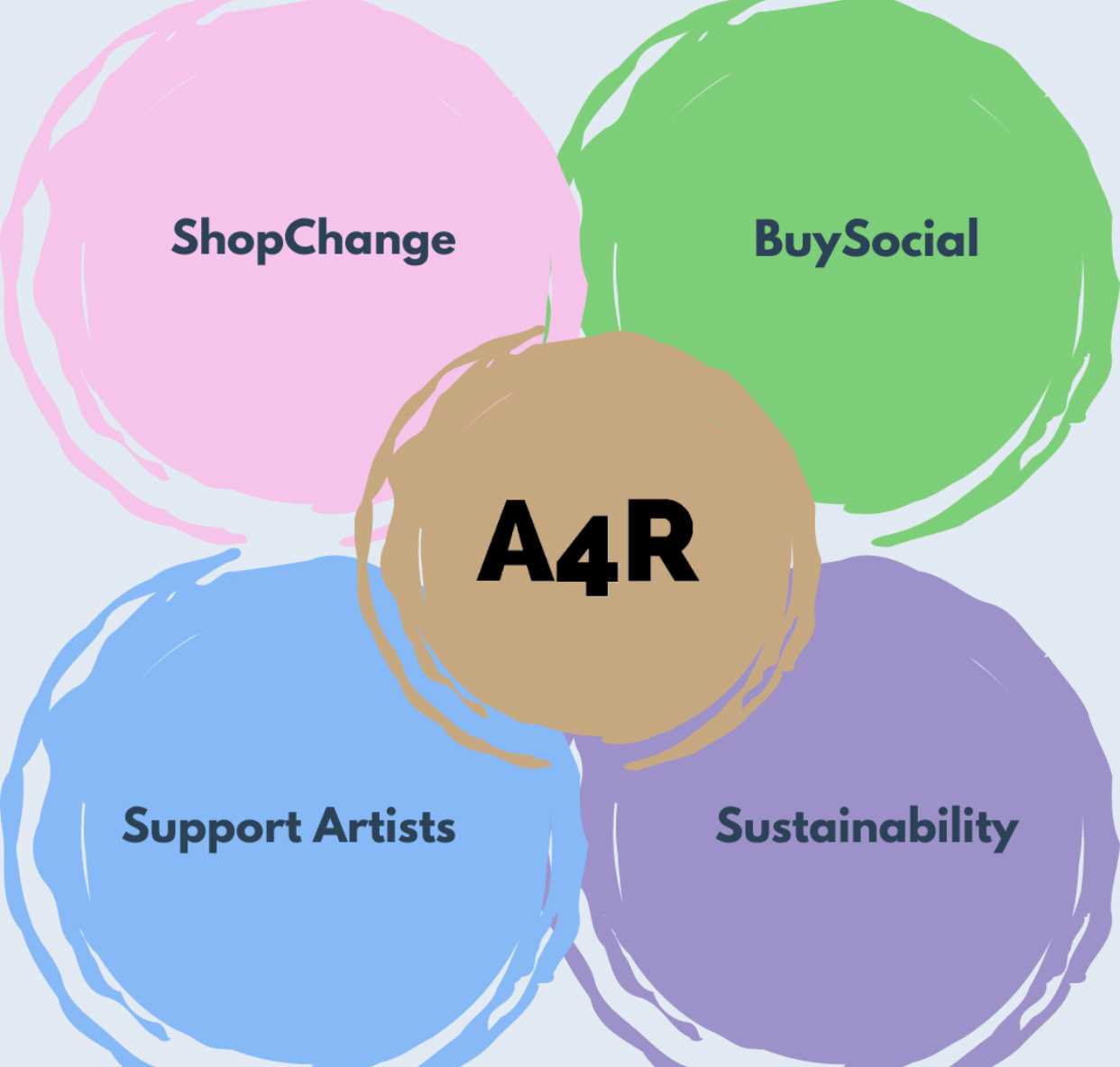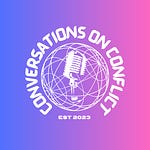Online Expression and Censorship in Post-Conflict Kashmir
Until the ceasefire in 2021, the Line of Control in Kashmir was one of the world’s most violent areas. Now, a different threat plagues the youth of Kashmir.
Kashimir seems to be recovering– tourism went from 4,028 international tourists in 2022 to 55,000 in 2023. The arts scene is thriving, with social media influencer Sayeda Hubza Ali attracting thousands of subscribers, depicting an idyllic life in the villages of Kashmir.
On 7th March 2024, Indian Prime Minister Narendra Modi visited Kashmir and said, ‘I am working hard to win your hearts’. Since the conflict began in 1947, the Muslim-majority region has sought independence or recognition as part of Pakistan. This has led to militancy and clashes between Kashmiris and police along the Line of Control (LOC) that divides the Indian and Pakistani administered sections of Kashmir.
Modi claims that since the abrogation of Article 370 (an article that gave Jammu and Kashmir partial autonomy). News sites like ‘India Decides’ and Narendra Modi’s YouTube channel claim that ‘Young Kashmiris Stand With India’. However, Kashmiri news sites and social media prove otherwise.
After Modi’s visit, the Kashmir Observer published a YouTube video titled ‘Reactions to PM Modi’s Kashmir Visit’. While the video was not inflammatory, the comments included sentiments such as :
@areehanoor1571
I'm Kashmiri. My reaction to his visit:
@user-jg6zc3re4e
Modi is a cancer to a lot of people
@leaves3597
No media will show the real Kashmiri people who are oppressed by Indian military; otherwise, they will be killed by Indian government.
Al Jazeera reported that attacks against Indian soldiers in the Jammu region have increased since 2021, and killings in Indian-administered Kashmir rose from 135 in 2019 to 150 in 2021. The abrogation of Article 370 has failed to stop the violence, which was meant to suppress hope of independence for Kashmiri locals.
Local news sites presented overwhelmingly positive views on Modi’s visit. The disconnect between the positive view of Modi by Indian news outlets and social media’s disdain for the press’ response was intriguing. It led me to investigate these news sources to find out why.
In February 2024, journalist Asif Sultan returned home from jail (after over 2,000 days). He spent 5 hours with his family, then was re-arrested under the ‘Unlawful Activities Prevention Act’ (UAPA). Authorities allege he aided anti-India militants, he denies it, and colleagues claim he was targeted for his 2018 article on Burhan Wani, a militant who died in 2016.
Sultan isn't the only journalist targeted by Indian authorities. Since the repeal of Jammu and Kashmir’s partial autonomy in 2019, at least 5 journalists have been charged under the UAPA, and three detained under the Public Safety Act (which allows detention without charge for up to two years). These include Irfan Mehraj (associated with Khurram Parvez’s human rights organization), Fahad Shah (editor of independent news outlet Kashmir Walla) and Sajad Gul. In Kashmir, police have used ‘revolving door arrests’; a tactic used by other governments, including apartheid South Africa, to silence activists.
The report reinforces the disturbing information that Kashmir experiences more internet shutdowns than any other region in the world.
In 2021, at least 106 shutdowns were documented in India, with 85 in Jammu and Kashmir. Notable shutdowns include one in August 2019, during communal violence against Muslim citizens, and one after the death of pro-freedom leader Syed Ali Shah Geelani in 2021. Internet in Kashmir has been shut down 411 times since January 2012. Before the abrogation of Article 370, the Jammu and Kashmir administration imposed a communication ban to curb anticipated reactions from pro-independence activists and locals.
In the Rest of World , Gafira Qadir interviewed several Kashmiri social media influencers about online censorship. One Kashmiri influencer said he has to work to recover his follower count after every internet interruption, saying ‘if the internet's banned again, I won’t get another chance. It’s exhausting.’ Online singer-songwriter Syed Areej Zafar stated that she had to 'be careful in Kashmir.'
The restricted internet access in Kashmir limits personal expression and information access. In Rest of World’s article, Bhat noted that even when he left Kashmir to post videos from Delhi, his reach was restricted since most of his followers were in Kashmir.
In 2020, the Indian Supreme Court ruled that indefinite internet shutdowns by the state were an abuse of power and not lawful. However, the government then lowered mobile internet speeds from 4G to 2G, making it virtually impossible to watch or upload content.
Additionally, police summoned several social media users in 2020 for posting political content (as reported by the Kashmir Walla before it was shut down and its editor arrested).
Censorship hinders communication in post-conflict society, denying young people the right to autonomy online and participation beyond their region. But online spaces created by young people offer hope.
Young people in Kashmir are very active online. There are two Kashmir Youth Power Facebook groups, both Public, with 17.5k and 7.3k members respectively. The most popular one bears the description:
‘the group is about the freedom of expression of youth of Kashmir, their intellectual ability to drive awareness, freedom of speech.....’
It is clear that in Kashmir, a place where journalists are repeatedly jailed for expressing political opinions, young people are still seeking to establish their own identity and expression. In a post-conflict community, power lies in communication. It's hopeful and positive that Kashmiri youth are asserting their identity and achieving online autonomy, despite the dangers.
In this episode Priya discusses the issues of rebuilding society in Kashmir. She is a student journalist with us on a placement organised by the Oxford University Career Services. This article was edited using Lex.page. Umages with Napkin.Ai
Thank you for reading an A4R 🎨 Post. Don’t forget to visit our gift shop here. Every purchase scales our impact and pays our bills.
















